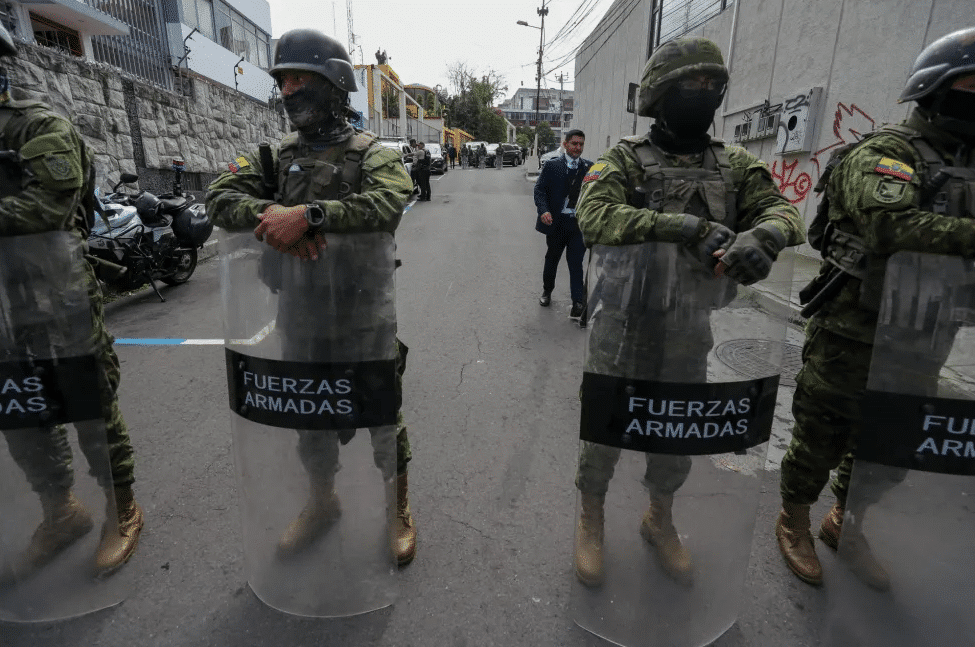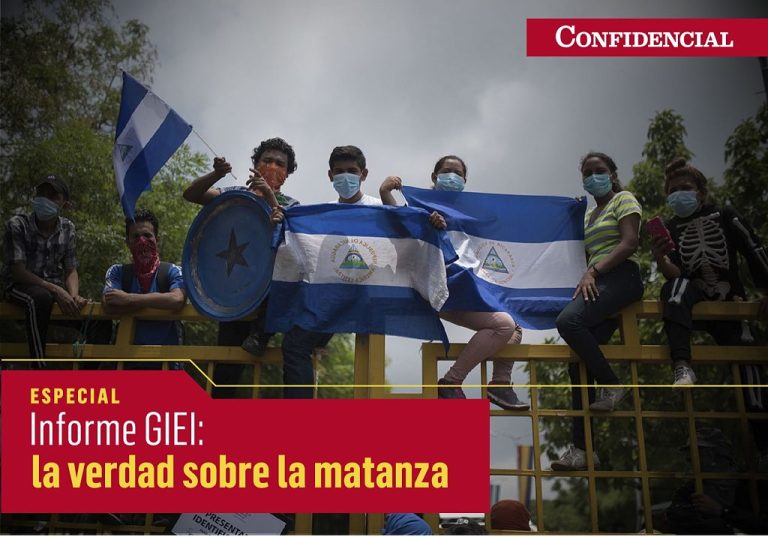5 de enero 2019

The Return of the Military

PUBLICIDAD 1M
PUBLICIDAD 4D
PUBLICIDAD 5D
To produce their report on Nicaragua, the experts analyzed more than three million tweets and more than 10,000 videos published on the networks.

Franco Valdivia Machado stretched his hand in front of a cell phone camera to show the shells found in the vicinity of Esteli’s central park. It was April 20th and the young man, who wore a mouth mask, explained how the demonstrators protesting in the center of the city were brutally repressed by the National Police and the mobs loyal to the leadership of the Sandinista Front.
It was five in the afternoon. A few hours later, at nine o’clock at night, Franco Valdivia, barely 24 years old, was dying from the impact of a bullet in his head. His video—which at the time went viral—served the Interdisciplinary Group of Independent Experts (GIEI) of the IACHR (Inter-American Human Rights Commission) to clarify what happened during the demonstrations that demanded the end of the dictatorship of Daniel Ortega and Rosario Murillo. It is a valuable testimony that helped determine that in Nicaragua crimes against humanity were committed, after the repression unleashed by the regime against the demonstrators.
The GIEI denounced in a 485-page report presented in Washington in late December (see the report in PDF format) that since they began to work in Nicaragua to clarify what happened between April 18th and May 30th, they did not have the support of the authorities to do their research. The Government, “systematically denied information required by the GIEI, as well as any possibility of coordination with State institutions,” said the experts.
The report from the Interdisciplinary Group of Independent Experts (GIEI) of the IACHR (Inter-American Human Rights Commission).
Thus, they conclude, the GIEI “could not, throughout its mandate, develop the work of collaborating with criminal investigations, planned for in the Agreement,” in reference to the document signed by the IACHR and the Government, which establishes the commitment of the Ortega Executive to collaborate with the work of the group of experts. To that refusal of the dictatorship was added, they explained, the fact that the violence intensified during their stay in Nicaragua, “which meant a serious limitation to carry out the work entrusted to them.”
Because they did not have the support of the State to do their investigations, the experts of GIEI decided to implement an innovative work methodology. They gathered information from “open sources,” interviewing the relatives of the victims, the survivors of the repression, the exiles and witnesses who courageously approached the group to tell their experiences.
But the most striking method was the meticulous analysis of the contents available on social networks. The GIEI approached experts in network analysis, who studied more than three million tweets and more than 10,000 videos available on networks, which were the tools used by protesters to denounce the human rights violations and the violence unleashed by the State.
It is the battle for the truth: the record of the brutality of the dictatorship, against the stigma that Ortega and Murillo wanted to impose on the demonstrators through the traditional media that the family controls.
The videos rescued by these organizations show people falling by the impact of bullets in the poorest neighborhoods of Managua. One of those videos shows the agony of Ismael Jose Perez Vilchez, 32 years old. A bullet struck him in the jaw. He, along with a group of neighbors from the barrio La Fuente, were trying to prevent the looting of a supermarket, when the Police came to shoot them. With his face shattered and his body covered with blood, Perez Vilchez gave his last death rattles. He left two daughters orphans. His mother, Maria Ramona Vilchez, says that the bullet was fired by a police officer. The crime, like all the rest, continues in impunity.
While repression intensified throughout the country, Ortega and Murillo designed a campaign to discredit the protestors through the television channels they control as well as the online newspaper “El 19 Digital” and social networks.
Ortega accused the demonstrators of trying to carry out a “coup d’état,” while Murillo, in her daily addresses, labelled the demonstrators as “miniscule,” “vandals,” “plagues,” “delinquents,” “vampires,” “terrorists,” “coup mongers,” and “diabolic.” They will not triumph! The diabolical will never be able to govern Nicaragua,” said Murillo on July 16th.
At the end of September, a Murillo exasperated, with her eyes burning in anger and affected voice, snapped at the camera: “What are you complaining about? What are you complaining about?” According to official emails leaked to Confidencial, it was Murillo who ordered the harsh repression since April 19th, when she told her most loyal operators: “we are going with everything!”
The GIEI explained that in order to do its report “a large number of documents were examined, including videos, photographs, newspaper articles, media material and in the social networks, many of which were registered by the citizens participating in the protests. Only in audiovisual material were revised and analyzed more than 10,000 files.
The GIEI was able to gather, analyze and verify a broad set of information that allowed it to reach reasonable conclusions in order to reconstruct the facts as they occurred, the circumstances, and identify possible responsible parties.
In the site created by the GIEI to present the conclusions of its six months of work in Nicaragua, graphics related to the analysis of information available on social networks are shown. On YouTube, additionally, there is a GIEI channel where videos analyzed by the experts are published, among them one that presents young Franco Valdivia showing a projectile, hours before being killed.
After its analysis, the GIEI concluded that “the State resorted to the abusive and indiscriminate use of force to suppress peaceful demonstrations of protest. A repressive pattern, which was verified at different times and places in Nicaragua, was the use of firearms, including weapons of war, directly against the demonstrators.
“It was possible to verify that cartridges with lead bullets were used, whose calibers correspond to different types of weapons, among which are war rifles.” The experts, were also able to determine that the majority of the murders and serious injuries” are the responsibility of the National Police, whose officers acted directly and also in a coordinated manner with armed paramilitary groups.”
These facts—one reads in the report—took place in a context in which, from the highest authorities of the State “a public discourse of stigmatization of the protests was made and the political endorsement of the repression.” Therefore, the GIEI states, “numerous crimes committed in the context of the repression of demonstrations constitute crimes against humanity.”
Archivado como:
PUBLICIDAD 3M
PUBLICIDAD 3D